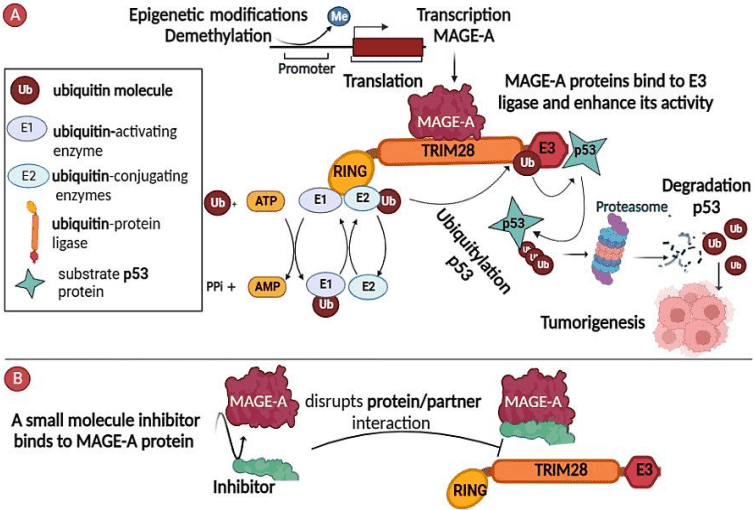NAA Services for Anti-MAGE
Besides the expertise in antibody design, analysis, and engineering, Creative Biolabs is also dedicated to the areas of NAAs (natural autoantibodies) in vitro detection and analysis with various biophysical probes. At present, we provide a full range of anti-MAGE antibody marker services for diseases diagnosis and therapeutic monitoring. The scientific team at Creative Biolabs can provide customers with comprehensive services from antibody detection to complete NAA analysis.
Background of Anti-MAGE Antibodies
The melanoma-associated antigen (MAGE) family consists of a number of antigens which originally recognized by cytotoxic T lymphocytes. This family is composed of 17 genes, some of them, such as MAGE-1, -3, -4, -6 and -12, are expressed only in malignant tumors and appear to be absent in normal tissues except testis and placenta. MAGE family members play important physiological and pathological roles in embryogenesis, germ cell genesis, and apoptosis. It is currently involved in the immunotherapy of patients with metastatic melanoma and other types of tumors. Member of MAGE family is an autoantigen which highly expressed in lung cancer, nasopharyngeal cancer, and systemic lupus erythematosus (SLE) cells and many other cancers and immune diseases, resulting in high titers of MAGE autoantibodies. Its antigen proteins and peptides have been widely used in clinical trials of immunotherapy for gastrointestinal cancer, esophageal cancer, lung cancer and so on.
 Fig.1 MAGE-A antigens as therapeutic targets for cancer immunotherapy.1
Fig.1 MAGE-A antigens as therapeutic targets for cancer immunotherapy.1
The Role of Anti-MAGE Antibodies in Nasopharyngeal Carcinoma
Nasopharyngeal carcinoma (NPC), also known as nasopharynx cancer, is a typical cancer originating from the nasopharynx. It is most common in the postero-lateral nasopharynx or pharyngeal recess or 'Fossa of Rosenmüller'. The initial presentations characterized by the swelling of the lymph nodes in the neck in many people. The most common signs and symptoms associated with the primary tumor include trismus, pain, otitis media, nasal regurgitation due to paresis of the soft palate, hearing loss and cranial nerve palsy (paralysis). Autoantibodies against MAGE have been found in patients with NPC. Studies of antibodies to MAGE were measured by ELISA to validate the positive correlation between MAGE antibodies in normal sera and in patient sera. In the NPC group, the results showed that there was a significant correlation between MAGE antibody levels and clinical stage, but no correlation with age or sex. These data showed that autoantibodies against MAGE derived from NPC tissue could be used as the biomarkers for a screening test and the early detection for NPC.
What We Can Do about NAA?
Researches show that Anti-MAGE is a potential prognostic and diagnostic marker in the treatment of NPC. As a member of NAAs, it demonstrates the important role of NAAs in disease treatment. At present, we provide comprehensive NAA services with our advanced platforms and experienced scientists, including NAA detection, NAA profiling, NAA affinity measurement, NAA epitope mapping, and paratope mapping. In addition, sufficient NAA products are available for your choice.
Creative Biolabs is equipped with state-of-the-art research and manufacturing facilities to help our clients design and implement highly customized NAA services. We are confident to provide you with the best NAA service at any time. Please feel free to contact us for more details.
Reference
- Alsalloum, Alaa, Julia A. Shevchenko, and Sergey Sennikov. "The Melanoma-Associated Antigen Family A (MAGE-A): A promising target for cancer immunotherapy?." Cancers 15.6 (2023): 1779.
Related Services:
- NAA Services for Anti-Fibronectin Antibody
- NAA Services for Anti-CD44 Antibody
- NAA Services for Anti-BMI-1 Antibody
- NAA Services for Anti-EBNA-1 Antibody
- NAA Services for Anti-NY-ESO-1 Antibody
- NAA Services for Anti-PRDX2/3 Antibody

